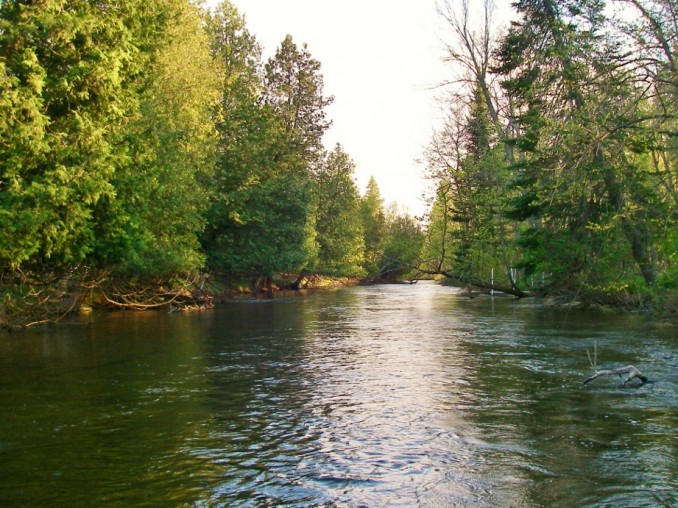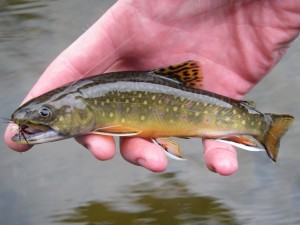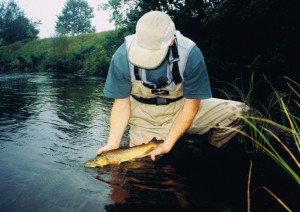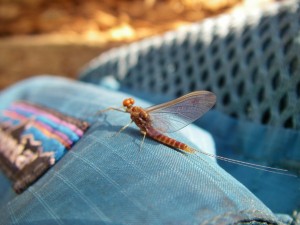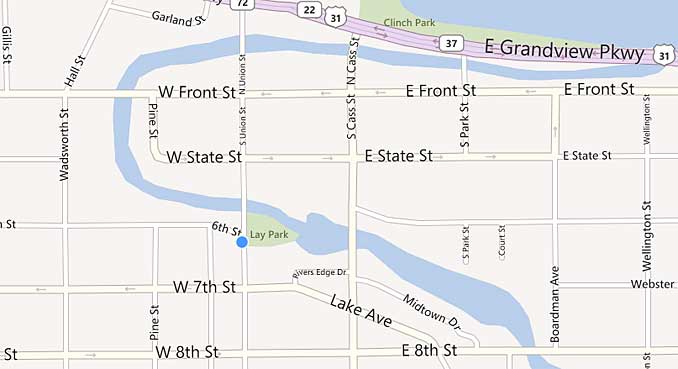The Boardman River is a gem when one considers its proximity to Traverse City. Starting as two rivers, the North and South Branches near the villages of Kalkaska and South Boardman, they merge and become one, flow north and eventually drain into West Grand Traverse Bay. The river generally runs clear and cooler, resulting in insect hatches that can be delayed behind its neighboring rivers.
Beginning in 2012 and ending in late 2018 a total of three hydroelectric dams were removed on the Boardman River watershed after some controversy and a lot of work in an effort to return the river to it’s natural riverbed.
Brown Bridge dam – the furthest upstream – was the first to be removed, followed by Boardman Dam (Cass Road traveled over the dam) and lastly, Sabin Dam. A small dam and fish ladder are in place in downtown Traverse City while the future of a proposed FishPass system works through the process of design, approval and implementation.
For the nostalgic history buff or interested angler, one of the most popular dry fly pattern used – The Adams, was originally developed by guide Len Halladay for angler Charles Adams who fished the Boardman River.
Upper Section
The upper section includes both the North and South Branches of the Boardman and where they come together, the “Forks” and downstream to Brown Bridge Pond. This is the smaller water of the Boardman which experiences fair to good hatches. Ranch Rudolph is located in this section of river and there are a number of places to access the river including some State of Michigan campgrounds: The Forks, Sheck’s Place, Trail Camp and Brown Bridge Road. The river averages 25 feet in width and flows quickly over a gravel bottom. Not good with a roll cast? You will be soon as there are bank-side and overhanging trees in much of the upper section of river. Don’t look for real large fish in this section, but fun fish nonetheless. Fish slow and thoroughly and you might be rewarded with something a little bigger than and handful of brook trout – larger fish do exist in this water.
Middle Section
When Brown Bridge Dam was removed, so was Brown Bridge pond – the impoundment upstream from the dam. It’s been fascinating to witness this old lake bed become a river again as the water moves quickly through a valley of vegetation. Quick moving and relatively shallow water is lined with easy to read structure all the way to the former dam site. With additional time, the Boardman’s wild fish population should redistribute throughout what is essentially new river.
Below the former Brown Bridge dam’s location anglers will find the quick and swift water continues with the addition of some deeper holes along its gravely bottom. Hatches of Hendricksons, Sulphurs, Brown Drakes and Grey Drakes can offer the fly angler some great fishing for brookies and brown trout close to town. Public access is relatively limited to a few bridge crossings and Schumsky’s access.
Just below the Beitner Road crossing is some of the fastest and deepest water in the river and requires even more care when wading. In short order the river meets the former impoundments of Boardman and Sabin dam which have also been returned to their natural river bottom and offers great looking water with lots of potential.
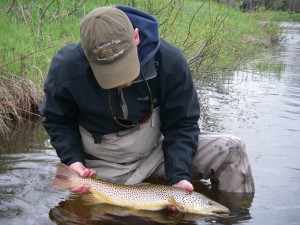 The water in these sections are still in transformation as of early 2019 and it will take another couple of years for the banks to completely stabilize, the planting of vegetation to take root and spread, structure added and ultimately the fish to occupy it. While the fish are still learning the water, anglers will be doing the same because this water resembles nothing like it had for the past 70 plus years.
The water in these sections are still in transformation as of early 2019 and it will take another couple of years for the banks to completely stabilize, the planting of vegetation to take root and spread, structure added and ultimately the fish to occupy it. While the fish are still learning the water, anglers will be doing the same because this water resembles nothing like it had for the past 70 plus years.
By removing the dams, the average high temperatures have already dropped significantly making for better fish survival in the warmer months of the year which will only help the non-stocked waters offer fly fishers an opportunity at brown and brook trout.
Lower Section
The water below Boardman Lake – specifically downstream of Union Street Dam located in Traverse City is considered the lower section. At this time, migratory fish are not passed above this dam as decisions on policy and a potential FishPass barrier and sorting system proposed for this location are made.
While considered “Urban Fishing,” steelhead anglers catch fish throughout the fall, winter and spring — often on their lunch break or just after work. In the warmer months, anglers can find Smallmouth, Brown Trout, Rainbow Trout, Pike, Carp, Walleye and who knows what else swimming in it. Not a bad place to cast a line when in town with a limited schedule.
In late August as Salmon begin to move upstream, a weir is placed just below Front St. and is used for egg collection and processing. The fish congregate below the dam as do anglers making it a bit of a spectacle. Watching the fish jump up the fish ladder can be entertaining as is watching the fish processing – if in town this time of year, stop by and have a look.
Anglers can be found in the surf — where the mouth of the Boardman meets the bay — swinging flies or casting baitfish patterns which can bring a Steelhead, Salmon, Lake Trout, Cisco, or Smallmouth Bass to hand.
Boardman River Hatches
There are a number of insects that can be found on the various sections of the Boardman River, and the times of the hatch can depend on which section as the dams and the waters above and below them are affected. The most noteworthy of insects include Hendricksons, Tan Caddis, Sulphurs, Brown Drakes, Grey Drakes and The Hex.
The summer months can offer some good terrestrial fishing due to the overhanging vegetation along the river. When nothing seems to be working on top, try swinging soft-hackles, smaller streamers that imitate small fish or, when all else fails, go with a big streamer on a sink-tip.
Check out the Hatch Chart for specific bug emergence information.
Map & Directions
The Boardman is located in Traverse City and starts 20 miles east near the villages of Kalkaska and South Boardman. Most of the river is Grand Traverse County.

